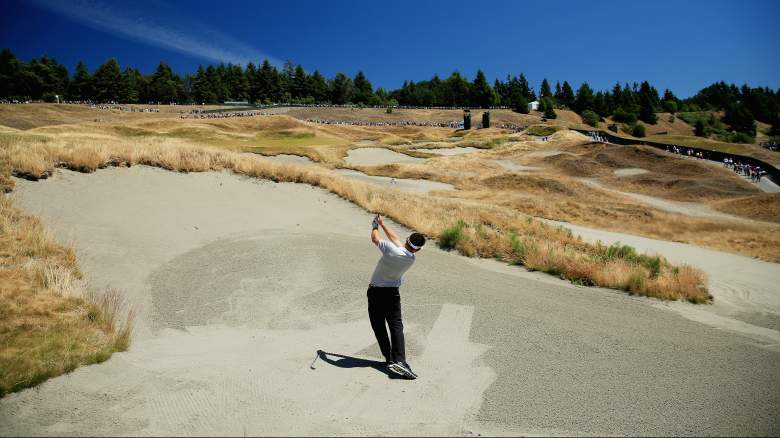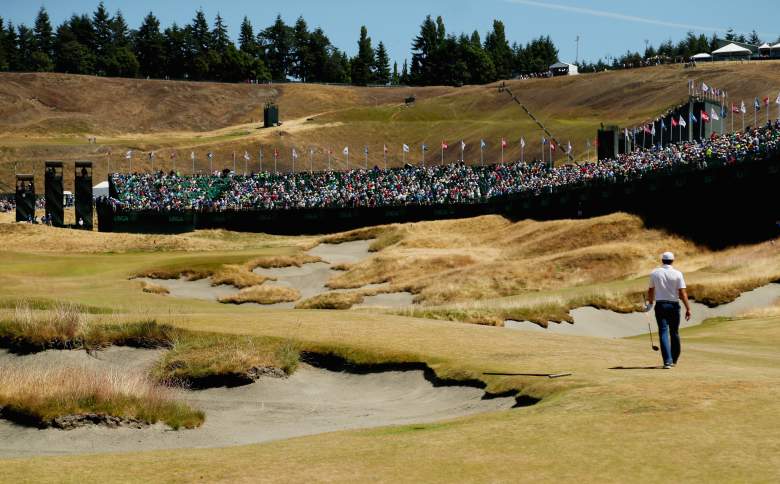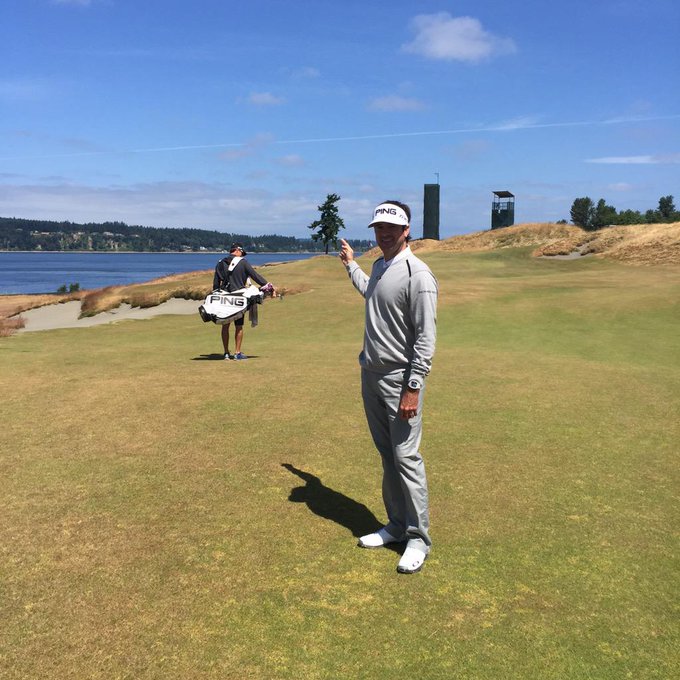
(Getty)
Move over, Rory McIlroy. Move over, Jordan Spieth. Move over, Tiger Woods.
The early star of the 2015 U.S. Open is Chambers Bay Golf Course. And that’s not necessarily a good thing.
Almost ever year, one of the major talking points at the U.S. Open is the course. But this year, that attention has been taken to another level. No one has even played an official round yet, but there are already complaints flying left and right at the unique conditions, layout and seemingly endless quirks of Chambers Bay.
It is “the most complex golf course I’ve seen in 50 years,” said 1973 Open Championship winner Tom Weiskopf.
Some are going to love it. Some are going to hate it. But everyone is going to be talking about it. Let’s take a look at everything you need to know about Chambers Bay, which is only eight years old and resides in University Place, Washington, about an hour south of Seattle.
1. It Shares Many Characteristics With True Links Courses
Take one look at Chambers Bay, and you might think you’re looking at a course in Scotland or England. It sits on the edge of a body of water, it has just one tree on the course, allowing you to see for miles, and its rolling hills are covered completely with fescue grass.
It’s technically not a true links course because of its huge changes in elevation and single tree–seriously–but it’s going to play like one. As World No. 1 Rory McIlroy put it, Chambers Bay “plays more like a links than some links courses.”
Typically, U.S. Opens are surrounded by massive trees, engulfing rough and the color green. But this year’s edition is going to feel a lot like an Open Championship.
“It’s certainly different for a U.S. Open, that’s for sure,” Tiger Woods said. “We normally play pretty traditional golf courses where it’s back tees, narrow fairways, high rough, and super-hard, fast greens.”
2. It’s Historically Long
The record for longest course in U.S. Open history currently stands at 7,264 yards, which was set at Winged Foot Golf Course in 2006.
Well, at the 2010 U.S. Amateur Open, Chambers Bay played almost 500 yards longer at 7,742. It was a USGA record at the time, although it was surpassed the following year by 18 yards.
The bombers should be ready to flex their muscles this week.
3. There Are 2 Holes That Can Flip-Flop Between Par 4 & Par 5
This is where things get especially interesting. Because of massive tee boxes, there is a lot of potential variation in hole length. So much variation, in fact, that holes No. 1 and 18 will alternate pars. For example, No. 1 could be a Par 4 and No. 18 could be a Par 5 on Thursday, but they could be vice-versa on Friday.
Mike Davis, the executive director of the USGA and the man who will choose the setup of each hole, talked about the unusual circumstances:
I know that there’s probably some saying, ‘Why did you change up the par at 1 and 18 — what gives?’ The way the architects designed the holes, truly they did it with flexibility in mind. And we looked at it and say these holes are great played as both a 4 and a 5. They’re two completely different drive zones if both holes played 4 and 5.
It’s unprecedented in major history, and it’s going to be thoroughly compelling to see how it plays out.
4. The Course Is Playing Like Concrete

(Getty)
And that’s only slightly an exaggeration. Check out this video of University of Georgia junior Lee McCoy bouncing his golf ball off the fairway like a basketball:
Or this one, of water actually trickling down the edge of the green:
Moreover, there isn’t any rain expected.
5. The Fairways & Greens Are Indistinguishable
Everything at Chambers Bay is fescue grass. The tee boxes, the fairways, even the putting surfaces. As a result, the only way to tell if a player is actually on the green or not is the little white dots as seen in the picture above.
Just another unique twist on a course full of them.

